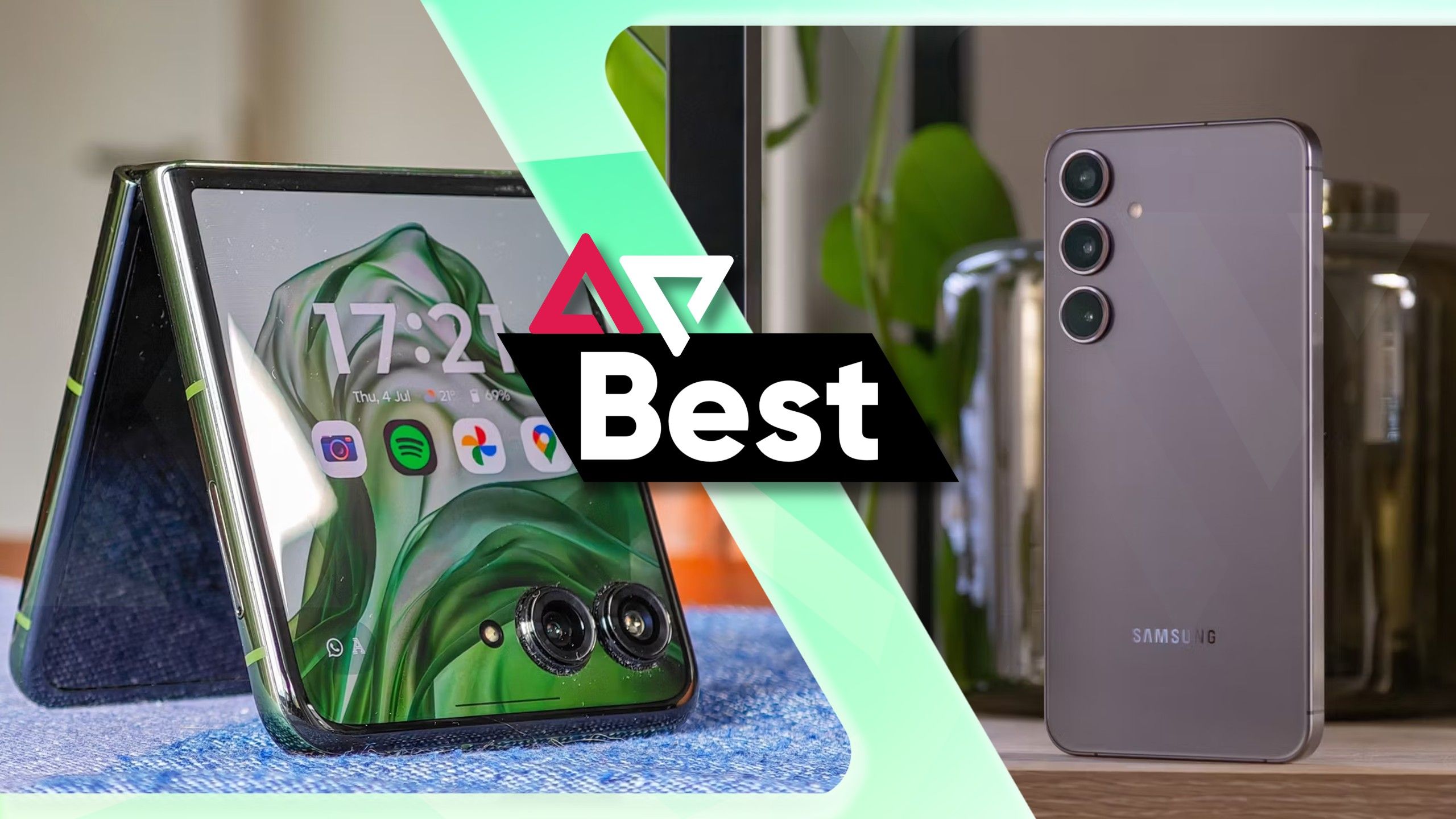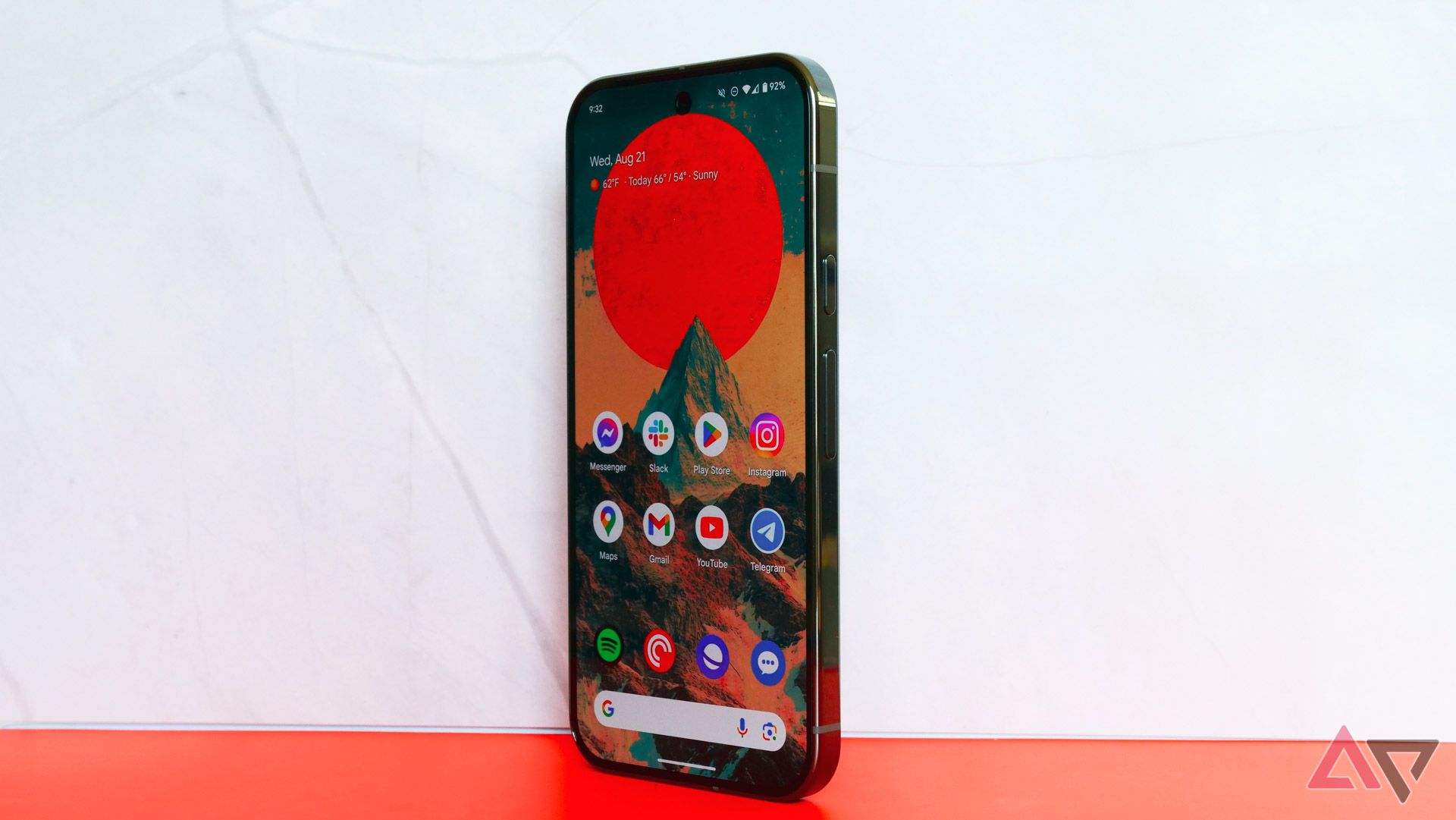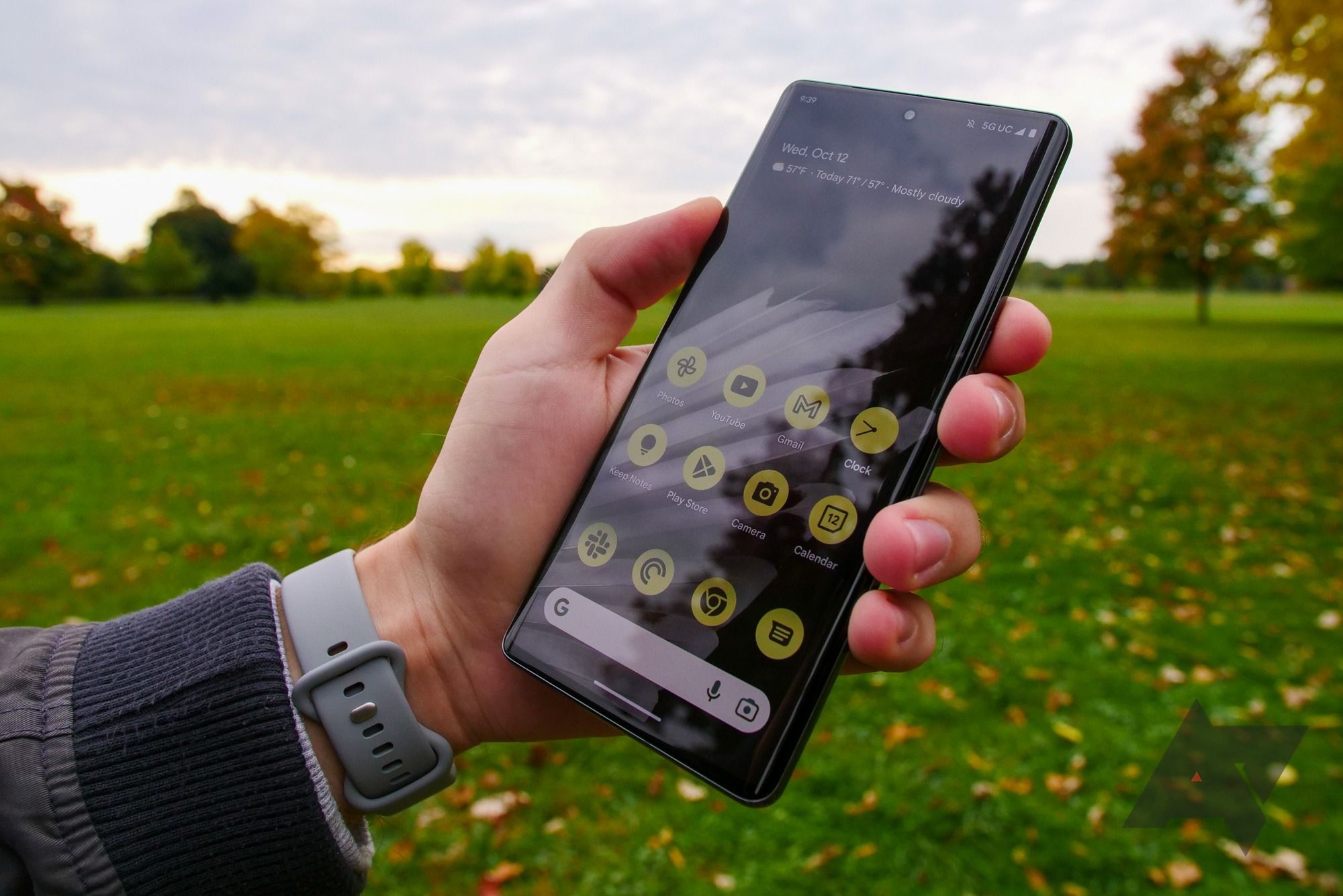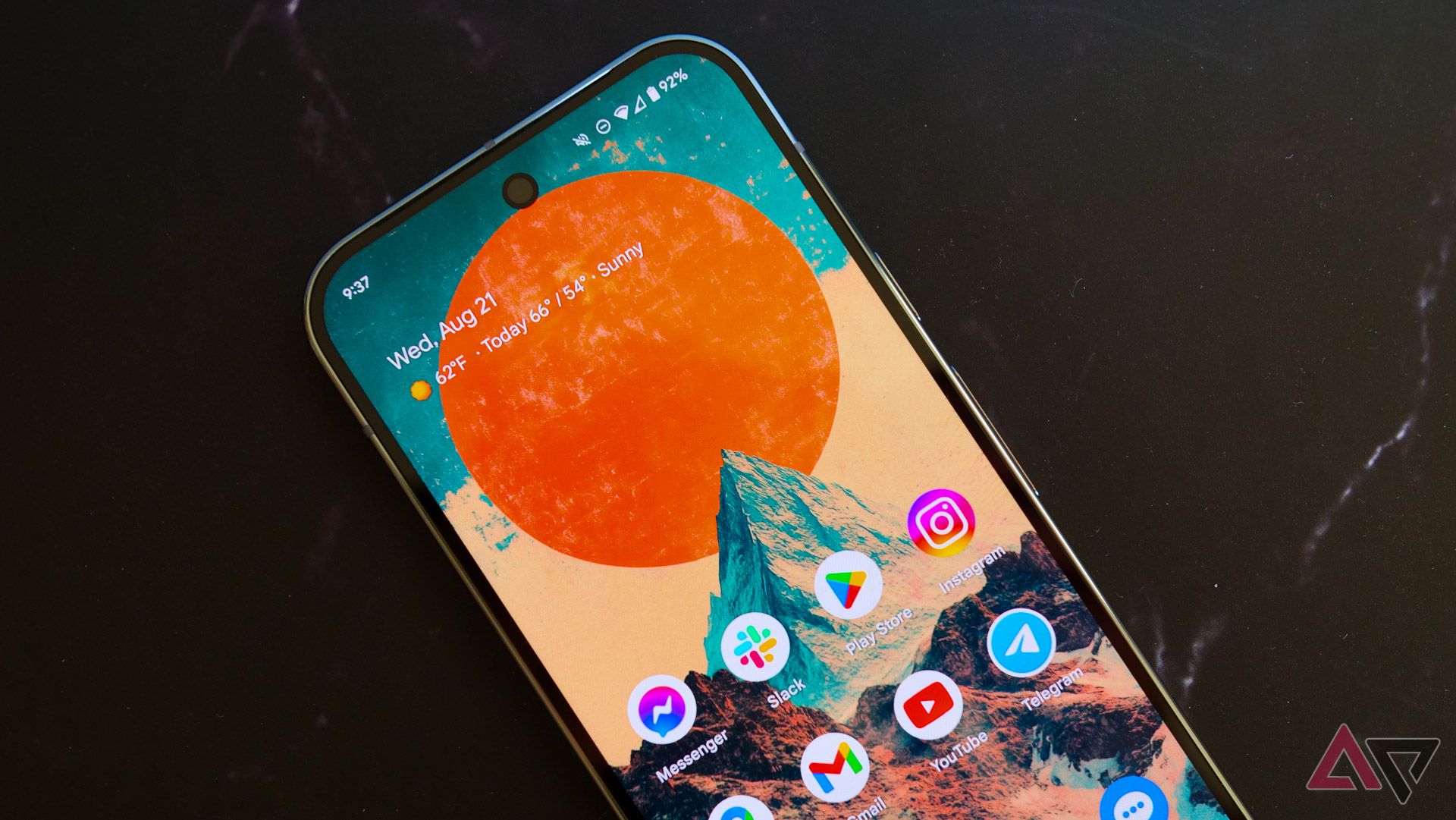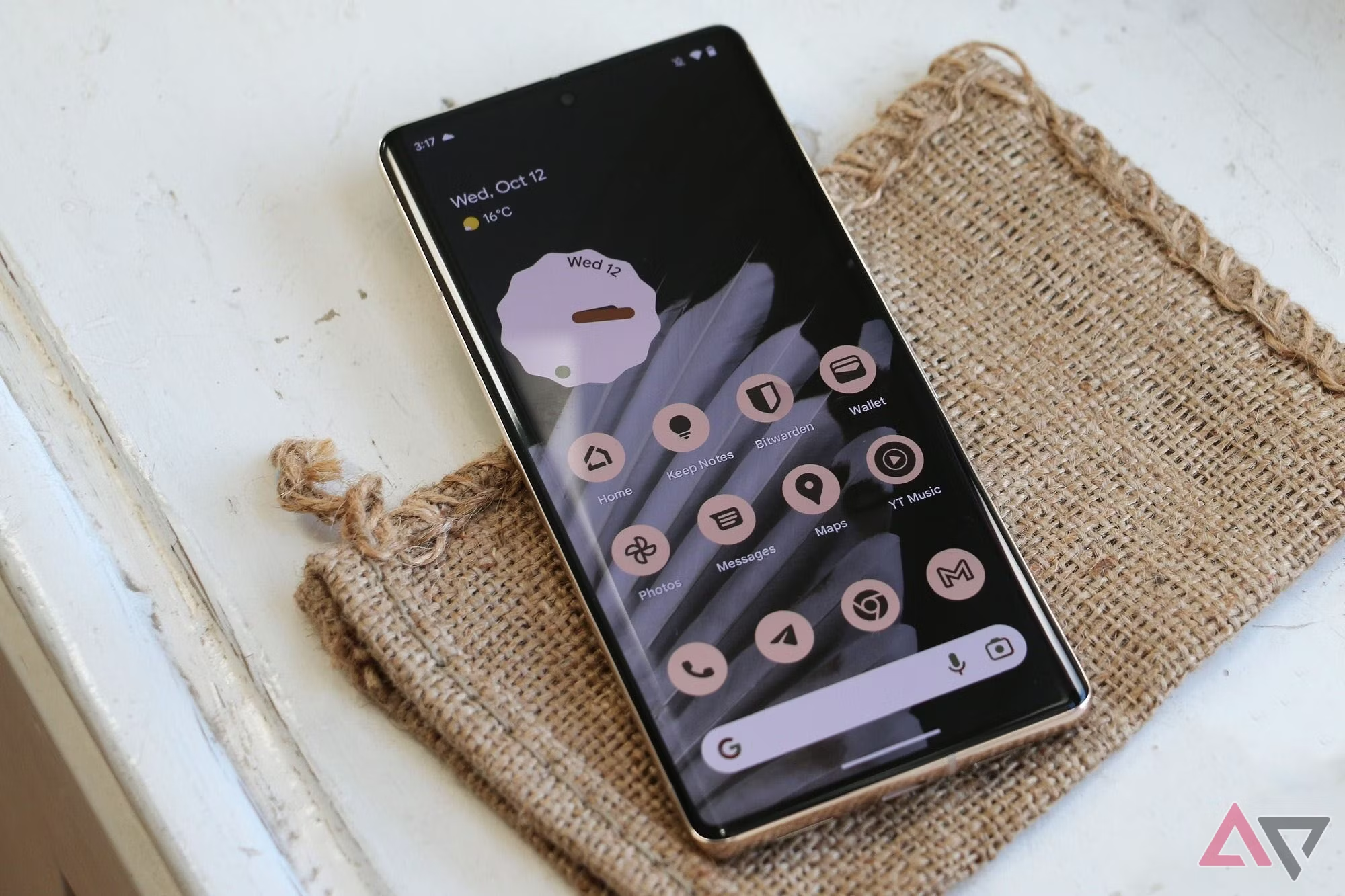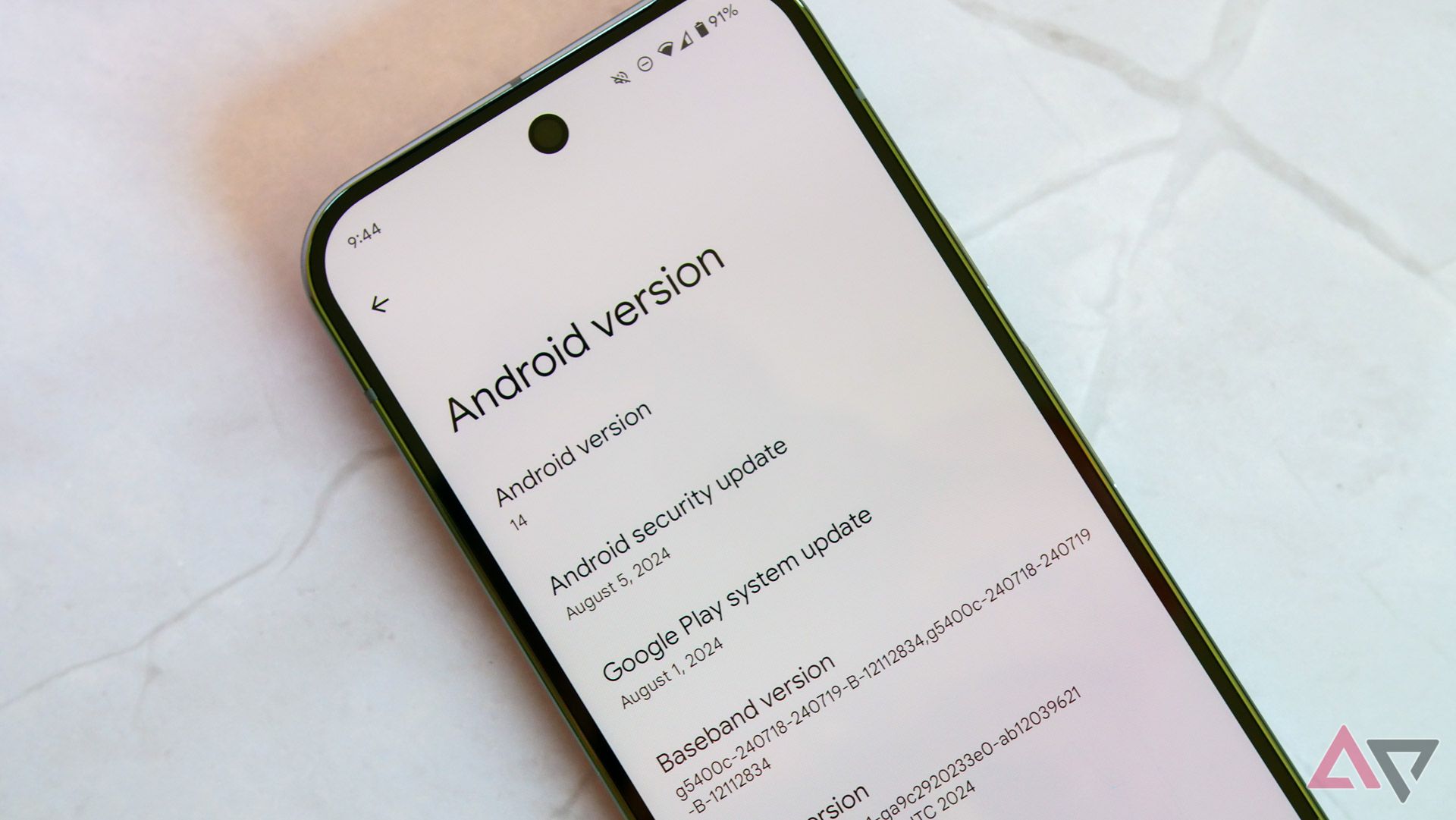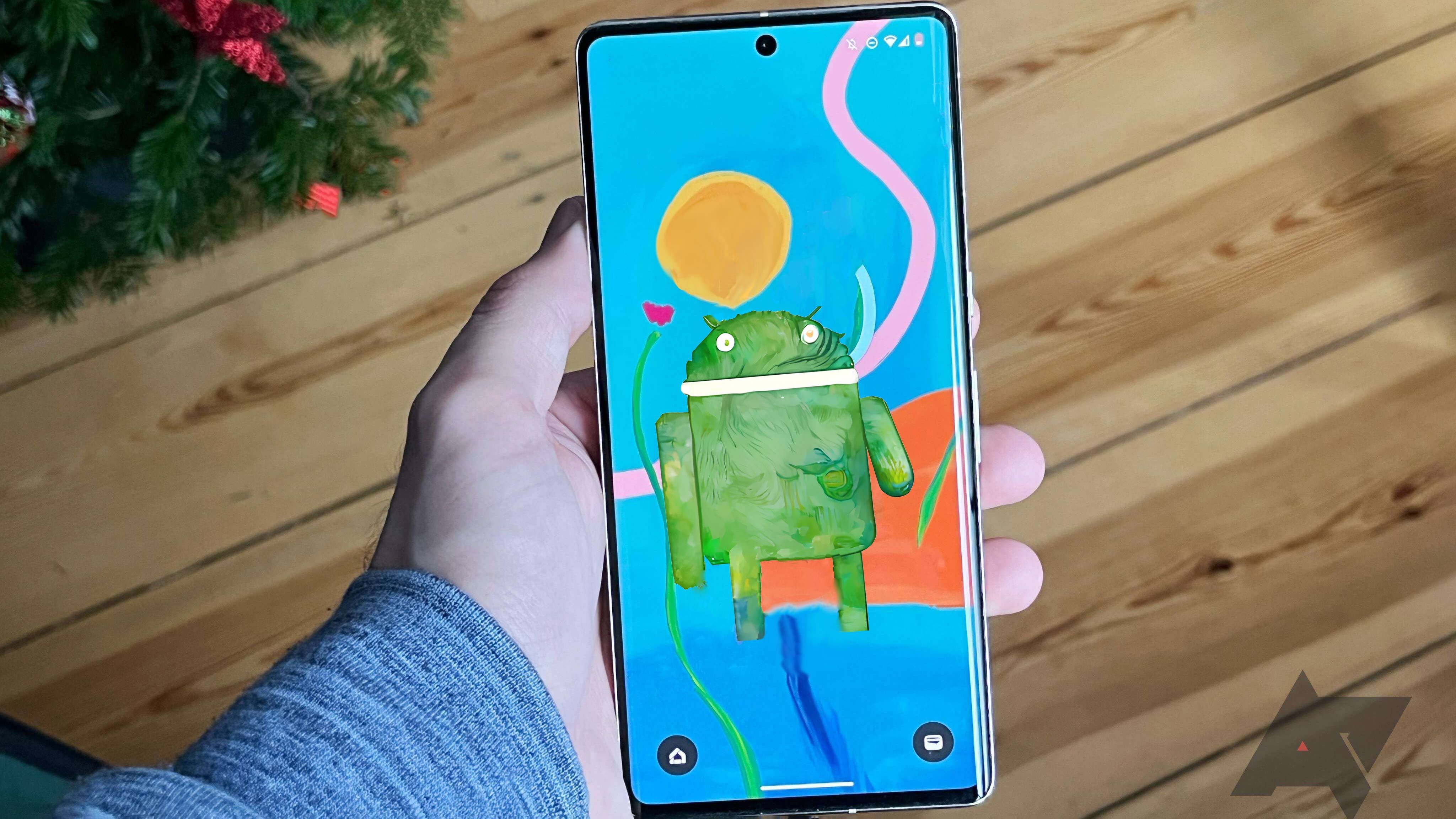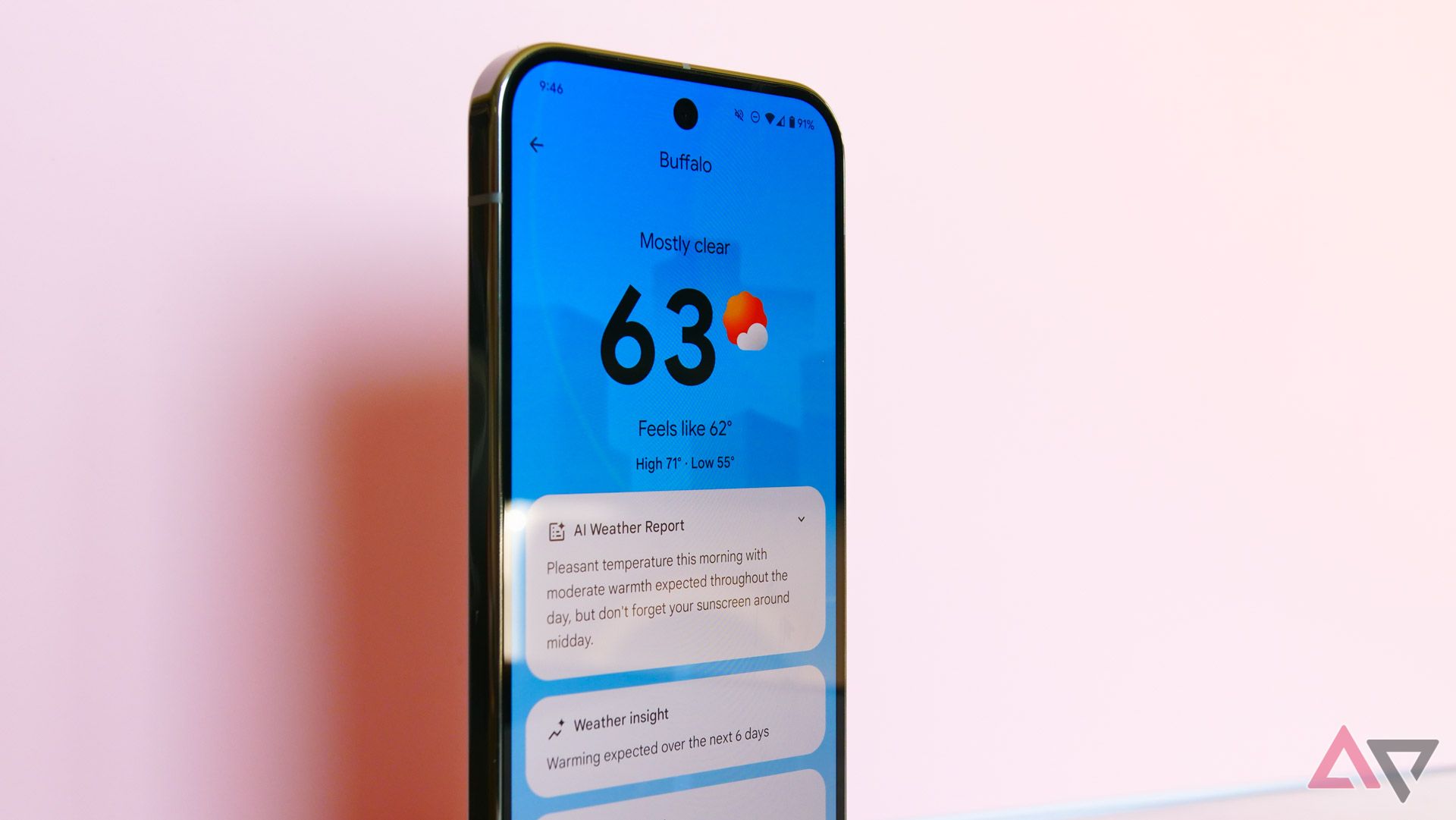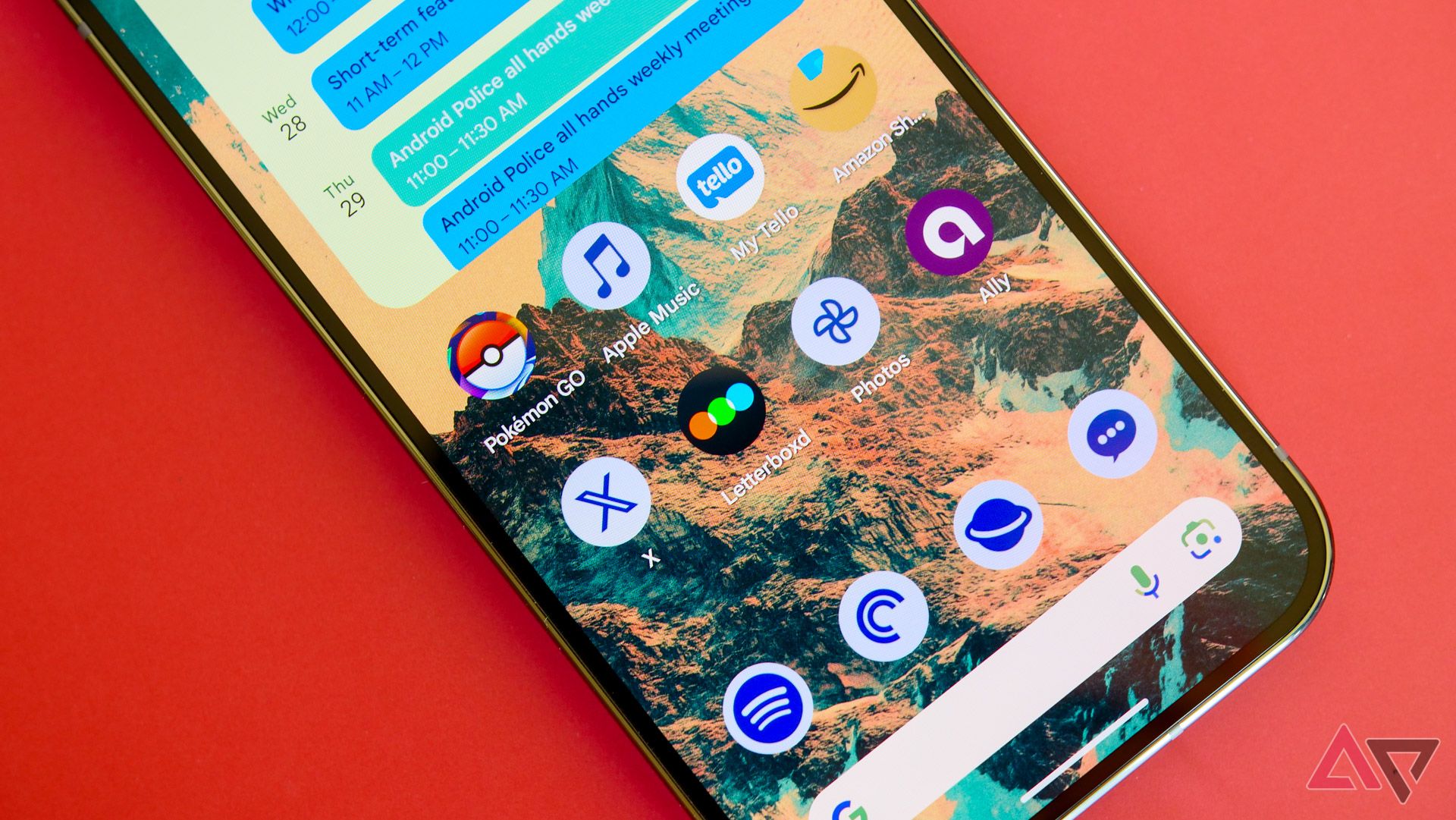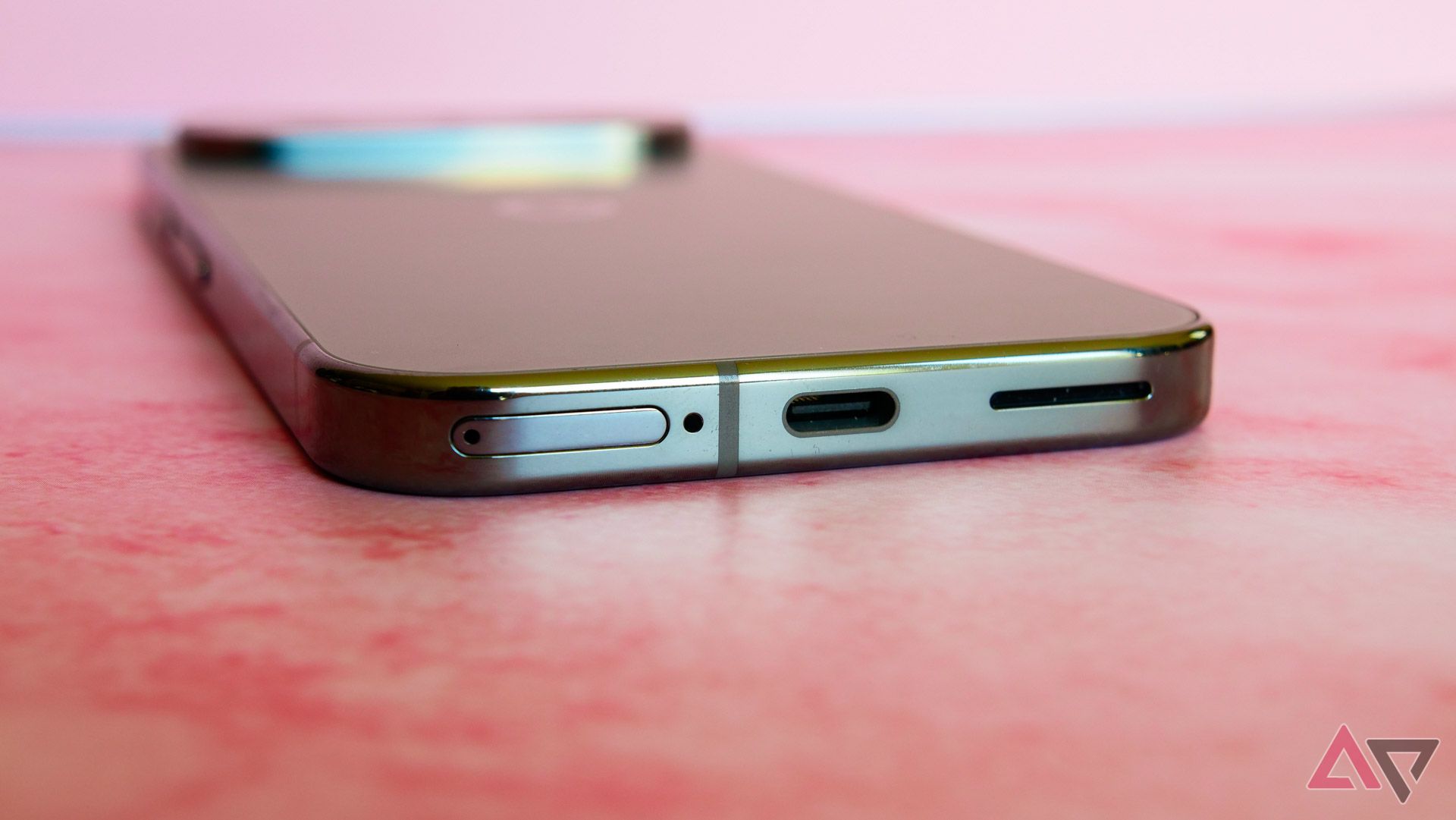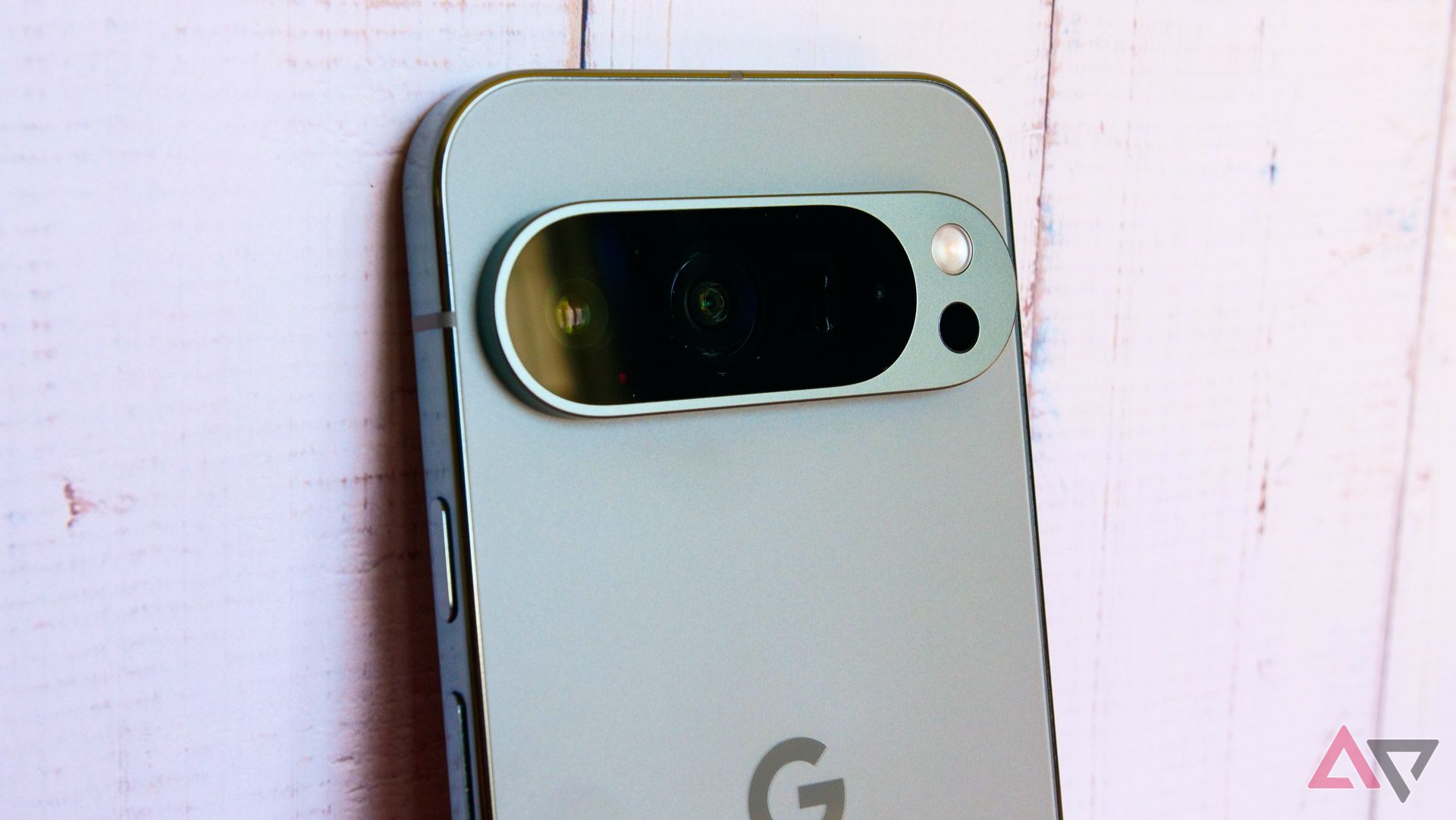-
A pocketable powerhouse
Google Pixel 9 Pro
Google’s Pixel 9 Pro changes the game by providing flagship power and performance in a rare smaller, 6.3-inch form factor without sacrificing any of the excellent photographic prowess Google is known for. Plus, it has a new Tensor G4 chip that’s more efficient and optimized for Gemini and Google’s other AI features.
Pros- Excellent design that’s more pocketable than ever
- Improved thermal performance and battery life
- Cool AI tools that are actually useful
Cons- Some AI features are still of dubious value
- Charging speeds haven’t improved
- Still lags behind other flagships in gaming performance
-
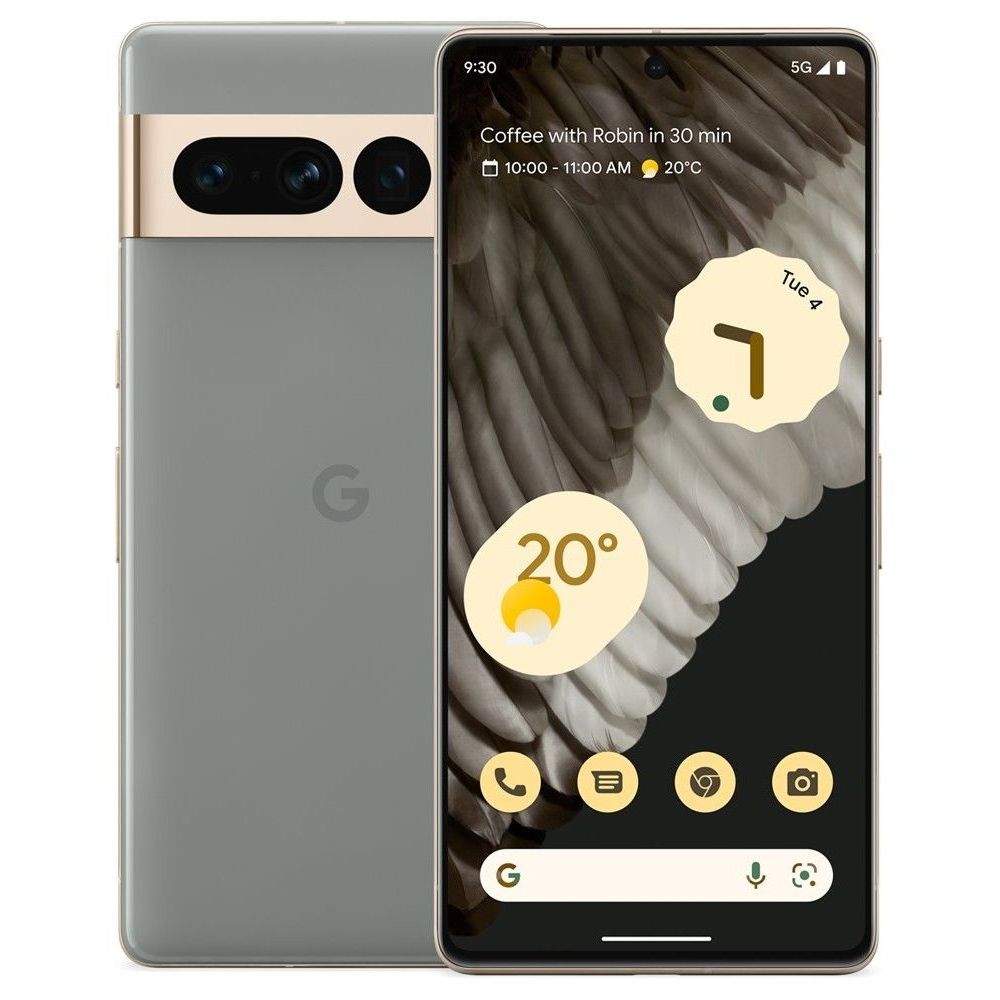
An aging champ
Google Pixel 7 Pro
Google’s Pixel 7 Pro still holds its own after two years. While the older Tensor G2 chip won’t win any performance contests, the top-notch camera system and expansive 6.7-inch screen could make it worth considering if you can get it at the right price.
Pros- Camera system remains impressive two years later
- Solid fit and finish
- Good AI-focused performance
Cons- Curved display and glossy glass make for an awkward hold
- Tensor G2 heats up under load
- Disappointing battery life
Google has been making the best camera phones on the market for at least three years. While this year’s Pixel 9 Pro is no exception, the company has done something refreshingly different by bringing all the power and photographic prowess of its flagship smartphone to a much more pocketable form factor.
As far as we’re concerned, the Pixel 9 Pro is the “Goldilocks” phone many folks have long awaited. Its no-compromise smaller design fills a gap in the Android market that’s previously tempted some to see how the other side lives (i.e. Apple). Android fans will no longer need to compromise between size and performance, and we hope that Google’s move encourages others to follow suit.
Still, some folks like larger screens, and while Google has the Pixel 9 Pro XL to fill that need, it arrives with a higher price tag. That might leave owners of older Pixel Pro models wondering if the smaller Pixel 9 Pro is worth the upgrade, and even those on the fence curious about whether they should opt for Google’s latest and greatest or if it’s worth saving a few bucks by going for Google’s Pixel 7 Pro — a leading flagship phone of its era that can still hold its own today. Let’s take a look at how these two compare.
Price, availability, and specs
As its latest flagship, Google’s Pixel 9 Pro isn’t too hard to find, even if it doesn’t have quite the same broad appeal as phones from rivals like Samsung and Apple. It’s available from all the major US carriers and MVNOs, including Google Fi, naturally. You can also get it unlocked from Amazon or Best Buy. It starts at $999 for the base 128GB model and is available in the usual capacities up to 1TB for $1,449. The full slate of colors for this year’s model is Obsidian, Porcelain, Hazel, and Rose Quart. Although the last shade is only available in the 256GB version, and you’ll have to settle for Obsidian if you want the 1TB model.
The Pixel 7 Pro was officially discontinued with the launch of the Pixel 9 lineup. But while it’s no longer on Google’s front page, the company is still selling it while supplies last, starting at $899 for the 128GB version. You can find it on Amazon at similar prices. While that’s a hard sell for a two-year-old phone, you may be able to find some deals from your mobile provider as carriers try to get rid of old stock.
-
Google Pixel 9 Pro Google Pixel 7 Pro SoC Google Tensor G4 Google Tensor G2 Display type LTPO OLED, 1-120Hz LTPO AMOLED, 120Hz Display dimensions 6.3″ 6.7″ Display resolution 1280 x 2856 1440 x 3120 RAM 16GB 12GB Storage 128GB, 256GB, 512GB, or 1TB 128GB, 256GB, 512GB Battery 4,700mAh 5,000mAh Charge speed 27W wired, 21W wireless 23W wired with Google 30W USB-C charger, up to 23W wireless with Pixel Stand, 12W wireless with compatible Qi chargers Charge options USB-C wired, Qi wireless Wired, Wireless Ports USB-C USB-C SIM support Nano-SIM and eSIM Dual SIM (nanoSIM + eSIM) Operating System Android 14 Android 13 Front camera 42MP, f/2.2 10.8MP, f/2.2, 92.8° FoV Rear camera 50MP, f/1.7, OIS main; 48MP, f/1.7 ultrawide; 48MP, f/2.8, 5x telephoto 50MP wide (f/1.85), 12MP ultrawide (f/2.2, 125.8° FoV), 48MP telephoto (f/3.5, 5x optical zoom) Wi-Fi connectivity Wi-Fi 7 Wi-Fi 6E Bluetooth Bluetooth 5.3 Bluetooth 5.2 Dimensions 152.8 x 72 x 8.5mm 162.9 x 76.6 x 8.9mm Weight 199g 212g IP Rating IP68 IP68 Colors Obsidian, Porcelain, Hazel, Rose Quartz Obsidian, Snow, Hazel Price From $999 $899 USD
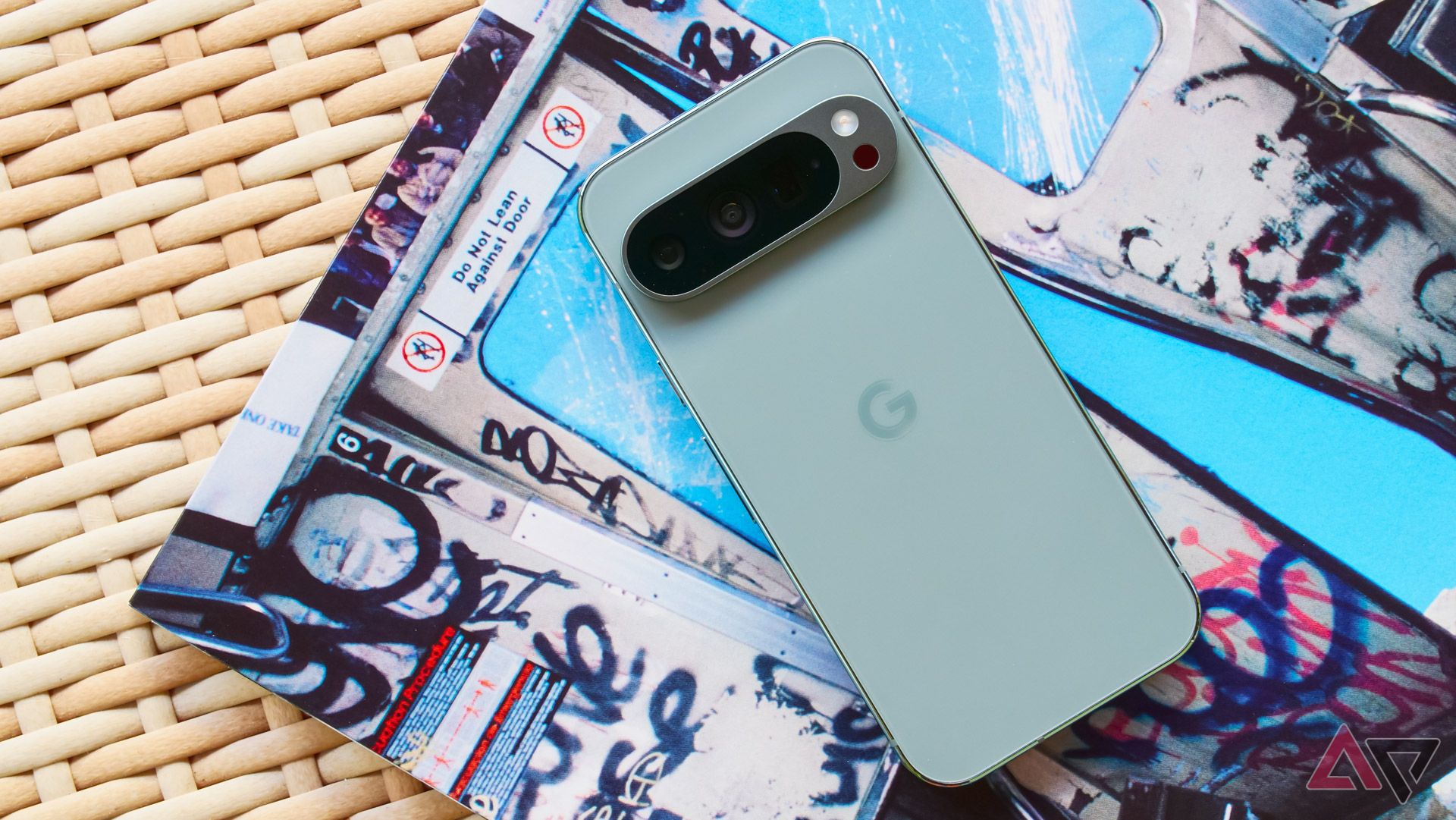
Read our review
Review: The Pixel 9 Pro is Google’s Goldilocks flagship
Not too big, not too small; just right

Read our review
Google Pixel 7 Pro review: A showcase for Google
Some small design changes are welcome, but Google’s usual bag of AI-powered tricks are the real treat
Design
Embracing the flatness
Following the introduction of the Pixel 6 lineup three years ago, Google’s Pixel phones settled into a consistent design language for the next couple of generations. A prominent camera bar made a bold statement that identified the phones as uniquely Google’s, while the rounded edges and curved screens gave them a sleek and streamlined aesthetic.
That changes with the Pixel 9 era, which has moved into the same flat-edged style that Apple and Samsung have adopted over the past four years. To put it bluntly, the Pixel 9 Pro looks more like an iPhone than ever, but we don’t think that’s a bad thing, as Google has also refined and improved the design. Plus, it’s finally embraced a flat edge-to-edge screen.
While the front of the phone looks eerily Apple-esque, flip it over, and there will be no mistaking the Pixel 9 Pro for anything other than a Pixel. Google’s delightfully opinionated camera bar is still here with a classier twist. Google has dropped the edge-to-edge design in favor of rounded edges that protrude from the back instead of blending into the sides.
However, size is perhaps the biggest thing that sets the Pixel 9 Pro apart from the Pixel 7 Pro and its predecessors. Google has finally produced the phone many of us have been waiting for — a 6.3-inch flagship that delivers all the power and performance of its older phablet-sized models. That makes it somewhat unique in the Android world and pits it squarely against Apple, which has offered two iPhone Pro sizes for years. There’s no longer a need for folks to be tempted to change sides just because they want a more pocketable flagship.
Those who prefer the larger Pixel Pros of yesteryear aren’t left out, as Google has the Pixel 9 Pro XL in the lineup this year. However, it’s also received a price bump to match its larger size, so the Pixel 7 Pro could be a better option for someone who wants a larger phone at a better price — and prefers Google’s classic design. Just keep in mind that the Pixel 7 Pro has an awkward glossy glass exterior that’s a slippery fingerprint magnet, so be prepared to slap a case onto it. We much prefer the matte frosted glass that Google returned to in last year’s Pixel 8 Pro, which thankfully continues to the Pixel 9 Pro.
Display
Just right
Google has always offered impressive phone displays, so the Pixel 7 Pro is no slouch, even two years later. Nevertheless, display technology marches on, and the Super Actua display on the Pixel 9 Pro is brighter and more vibrant than ever, reaching 3,000 nits of peak brightness compared to the Pixel 7 Pro’s 1,500-nit maximum.
That makes a big difference when using your phone outdoors, but beyond that, we think the most prominent distinction between the two phones isn’t so much in display quality as display size and design. The 6.3-inch Pixel 9 Pro impressed us by managing to feel just the right size, a sense that was undoubtedly helped by its flat, edge-to-edge design. The bezels aren’t quite as slim as what we’ve seen from some of Google’s competitors, but they still blend nicely into the background, and we don’t think anyone will notice unless you’re comparing phones side-by-side.
Of course, if you’re looking for pure size, the Pixel 7 Pro has nearly half an inch on the Pixel 9 Pro, but the resolution of both screens is such that pixel densities are even to the naked eye. Plus, the curved display takes a little bit off the edges.
The screens are vibrant and crisp, but a screen that can be easily viewed in direct sunlight and adopts a more modern flat design is hard to beat. As far as we’re concerned, the Pixel 9 Pro has one of the best displays you can find on any smartphone and the best you’ll get on an Android device of this size.
Software
It’s all about AI
The Pixel 9 lineup shipped a bit early this year, which places them slightly behind the Android release curve. Unlike prior models that shipped with each year’s freshest new Android releases, the Pixel 9 Pro arrives with Android 14 on board.
However, we’re not sure that matters as much as it did in previous years. Sure, the Pixel 9 Pro will use up the first of its promised seven years of updates on Android 15 next month, but that will still take it all the way to Android 22 in 2031. It feels a bit like Google is cheating us out of an update, but we imagine most folks will have moved on to new hardware by then. Nevertheless, that’s still far better than the Pixel 7 Pro, which came with Android 13 but only four years of updates. That model will get Android 15, likely at the same time it lands on the Pixel 9 Pro, but it will reach the end of the line in 2026 after Android 17 comes out.
Nevertheless, the real reason why it doesn’t make as much of a difference is that Android updates themselves aren’t nearly as significant as they once were, especially on Google’s Pixel phones. These days, it’s about the AI features, and plenty of those are packed in exclusively for the Pixel 9 Pro — despite using essentially the same Android 14 operating system as everything else.
Google was putting AI features into its phones long before companies like OpenAI made AI a trendy buzzword. In those days, it was referred to with terms like “machine learning” and “computational photography,” but make no mistake, this was still artificial intelligence, and Google built its Tensor chips to handle it from the start.
As a result, Google has led the way in developing AI features that are tightly integrated into the Android experience. Features like Magic Eraser and Call Screen have been around for years, so the Pixel 9 Pro is just building on Google’s experience to take everything to a whole new level — into what Google calls the “Gemini era.”
That doesn’t mean that every AI tool in the Pixel 9 Pro is a winner, but it still has more helpful consumer-focused AI features than any other Android phone maker. While Apple Intelligence may be slowly nipping at its heels, Google has a massive lead, and we don’t expect that to change anytime soon.
Some of our favorite features on the Pixel 9 Pro were the new, fully featured Weather app, Pixel Screenshots, and Gemini Live. On the flip side, Pixel Studio does an impressive job of generating images but lacks any guardrails to prevent its abuse for darker and more antisocial purposes.
Some of these may eventually come to older models as far back as the Pixel 6, but for now, the Pixel 9 Pro is the phone to get if you want to take advantage of everything Google offers in that department. Of course, the Pixel 7 Pro had class-leading AI features for its own era. They pale compared to what most smartphone makers are doing today, but if you’re in the group of folks who think AI is a bit of a gimmick and want a phone that just works, the Pixel 7 Pro will get the job done.
Performance
Cooler and more efficient
The Gemini era aside, one of the most compelling reasons to opt for the Pixel 9 Pro may be the newer Tensor G4 chip. Now in its fourth generation, Google is delivering more balanced performance and power efficiency than ever, and it shows.
The first two generations of Tensor used in the Pixel 6 and Pixel 7 arguably leaned too heavily into machine learning. Those chips powered some impressive AI features and provided good performance for everyday tasks but fell down hard when it came to more demanding tasks like gaming, heating up and chewing through battery like nobody’s business. We often found the Pixel 7 Pro heating up even during prolonged everyday use, such as taking multiple photos in sequence or even just browsing through social media apps.
While the Pixel 9 Pro still isn’t the gaming powerhouse that rival Qualcomm-powered devices are, the Tensor G4 builds on last year’s G3 improvements by running cooler and more efficiently than ever. That’s helped by a whopping 16GB of RAM inside — an increase undoubtedly driven by Gemini Live and other AI features.
For raw performance, the G4 is a modest upgrade over the G3, and sadly, if you’re a serious mobile gamer, you’ll still want to look elsewhere. However, the Pixel 9 Pro’s new chip offers the most significant advantage in reducing its hunger for battery juice.
Battery life
Reaching new heights
The Pixel 7 Pro sometimes struggled to get through a single day of use, and it was inconsistent enough that we were never comfortable leaving home without a battery pack handy. Google’s Adaptive Battery helped smooth off some of the edges, but it was an oddly mixed bag of never being quite sure how much you’d still have in the tank by the end of the day.
The good news is that the new Tensor G4 chip in the Pixel 9 Pro dramatically changes that equation. For the first time, a Pixel phone can at least enter the arena against its Qualcomm-powered rivals.
In short, you can pretty much count on all-day battery life. We got five hours of screen time easily, even while juggling numerous background tasks like music and podcasts, so we don’t think it’s out of the question to hit six hours with more moderate use. Most importantly, the battery drain was remarkably consistent, so you get a power consumption curve you can count on and adjust your charging habits accordingly.
Sadly, it’s not all sunshine and roses, as Google still hasn’t upped its charging speeds. The Pixel 9 Pro gets the same 27W speeds as the Pixel 7 Pro, despite the Pixel 9 Pro XL getting a speed bump to 37W charging. Google also hasn’t embraced Qi2 wireless charging, so the bottom line is that while the Pixel 9 Pro will provide longer and more consistent battery life than the Pixel 7 Pro, it won’t charge any faster.
Camera
The best gets even better
If there’s one single area in which the Pixel 7 Pro still punches above its weight class, it’s photography. Google’s Pixel phones have always been in a class of their own when it comes to taking great pictures, and each model’s only true competitors are its successors.
While the Pixel 9 Pro has modest improvements over last year’s model, the Pixel 8 Pro moved the needle significantly, with a bigger sensor, a 48-megapixel (MP) ultrawide camera, and optical image stabilization on the 5x telephoto lens. The Pixel 9 Pro benefits from all these improvements, which means you’ll get better photos, especially in lower lighting conditions. It also adds a 42MP selfie camera around the front, which is a pretty healthy upgrade from the 10MP shooter of previous generations.
However, the Pixel 7 Pro still takes excellent photos, so when we compare it with the Pixel 9 Pro, we’re almost splitting hairs between “very good” and “great.” Google’s Pixel phones have always produced our favorite results of any smartphone, and we don’t think anyone will be disappointed with what the Pixel 7 Pro puts out. While the Pixel 9 Pro adds some nifty AI features to enhance your photographic skills, most are post-production tools like Add Me. At the end of the day, we think the most significant advantage of the Pixel 9 Pro is that you get Google’s best camera system in a smaller package.
Which is right for you?
Whether it’s worth upgrading from your trusty Pixel 7 Pro is a trickier question, especially if you’re a fan of the larger screen, but if you’re in the market for a new phone and have the money to spend, there’s no doubt that the Pixel 9 Pro is a clear winner.
With the Pixel 9 Pro, you’re getting one of the most powerful smartphones available in a 6.3-inch size (which’s rare in an era when most companies are going even bigger), plus reliable all-day battery life, a next-generation chip that powers some genuinely useful AI features, and the best screen and what’s still the best camera system on any Android smartphone. You also get seven years of Android updates, and regular Pixel feature drops to keep things fresh.
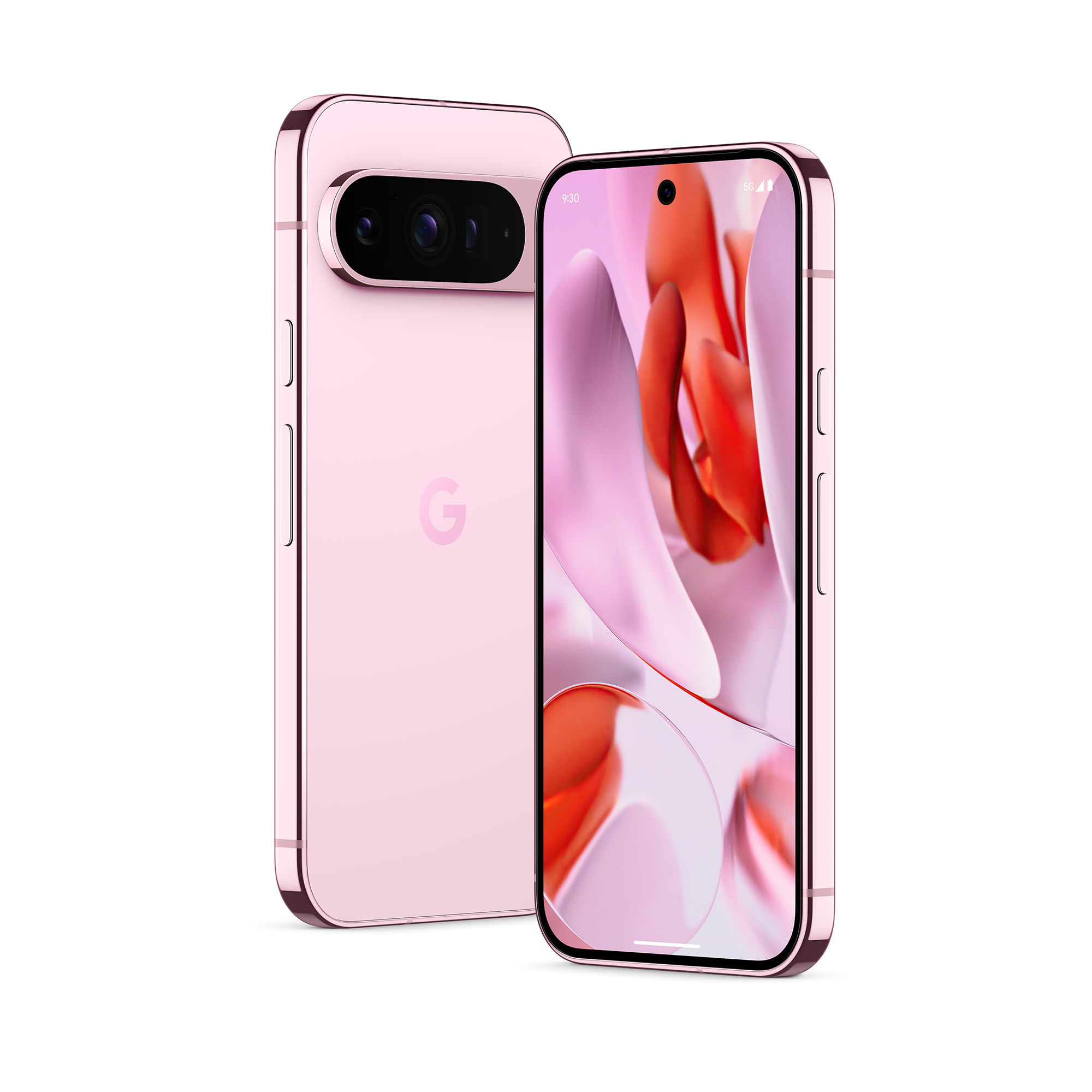
Editor’s choice
Google Pixel 9 Pro
The latest and greatest
Google’s Pixel 9 Pro delivers flagship performance in a refreshingly pocketable 6.3-inch design, putting it in a class of its own for folks who find today’s move toward bigger phones off-putting. The Tensor G4 chip delivers reliable all-day battery life and useful AI features, while the camera system continues to be second to none.
Still, even though the Pixel 9 Pro may be the newcomer, the Pixel 7 Pro has aged remarkably well. The camera system remains excellent even today, and while the Tensor G2 can get a bit hot to handle, it still delivers more than sufficient performance for everyday use. While we wouldn’t recommend paying Google’s asking price for the Pixel 7 Pro, there are some good deals out there that make it a worthy contender for someone looking for the best budget camera phone.

Runner-up
Google Pixel 7 Pro
Still holds its own
The Pixel 7 Pro may be two years old, but it still holds its own against many of today’s powerful flagships, especially in the camera department. The larger 6.7-inch screen is crisp and vibrant, although the Tensor G2 chip still warms up under heavy load, and the battery life isn’t the most consistent.

